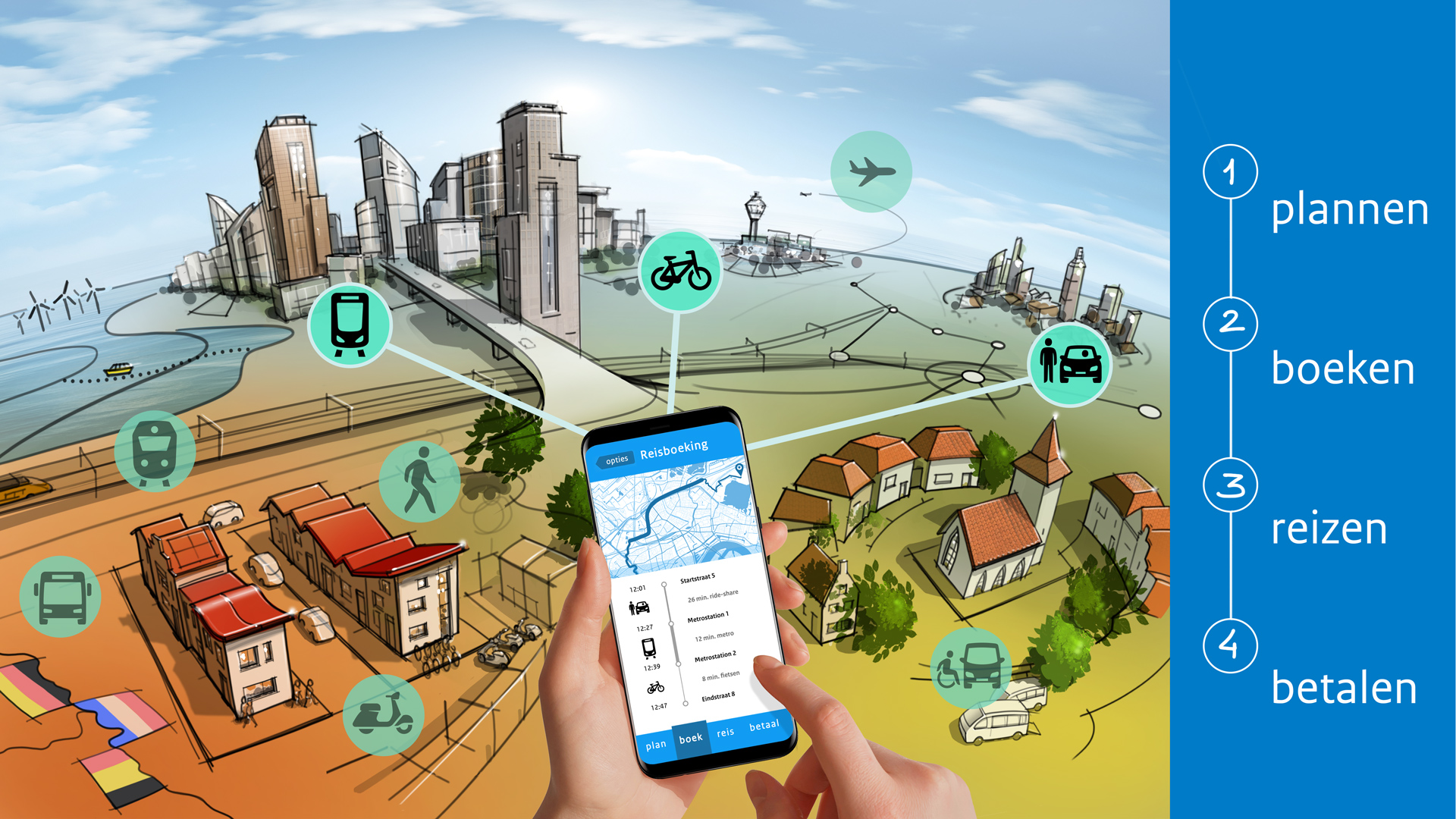Mobility management / Public transport
MaaS developments and pressures on social inclusion
Accessibility and social inclusion have always been important elements in the design of public transport systems. But with the advent of Mobility as a Service (MaaS), new challenges are arising. Namely, how are people with less digitally knowledge accommodated for? Robin Kleine of Mobycon and Jacky Lodewijks of Forseti argue that some government direction is necessary to address this important issue.
This content was originally published in Dutch for OVPro here: https://bit.ly/3dTPBAI

Access to mobility has always been vitally important for enabling people to participate in society. Mobility is an essential, for example, to get a job, as well as maintaining social and professional contacts and establishing new ones. However, mobility is not a given for everyone. In fact, a significant portion of the population in the Netherlands currently experiences transport poverty to some extent. A good definition of transport poverty is as follows:
“The process by which people are prevented from participating in the economic, political and social life of the community because of reduced accessibility to opportunities, services and social networks, due in whole or in part to insufficient mobility in a society and environment built around the assumption of high mobility.”
Transport Poverty
Transport poverty certainly occurs in the Netherlands: recent research has shown that in some neighbourhoods in Rotterdam, The Hague and Utrecht, about 20% of the population suffers from transport poverty. However, it is largely unclear what its current impact on mobility is.
Mobility policies in the Netherlands have always paid attention to social inclusion. Every year, governments spend more than €1-billion on projects and programmes that ensure public transport remains affordable for everyone, and that a basic range of transport options are available throughout the country. This applies not only to busy, more densely populated areas, but also rural areas with fewer public transport users.
Investments
Enormous investments have been made over the past 15 years to make public transport more accessible. Various initiatives employing free and/or cheap public transport have also been used to lower the threshold of use for different target groups. The aim, of course, is to give these groups better access to mobility options and thus better opportunities to participate in society.
In addition, governments annually spend more than €600-million on specialised transport for specific target groups who are unable to travel (independently) with other forms of mobility. For many this is a necessary provision to participate in society and to develop themselves. What is striking is the fundamental role our government and society have in guaranteeing social inclusion with mobility. The market plays just a marginal role here, which make sense; a healthy business model for providing the necessary services is usually not possible without support from government or public agencies.
Bundling
With the development of MaaS, we are in fact taking a major next step toward digital integration of mobility. This has been a natural development that has been going on for many years. An important next step now taking place with MaaS is to bundle all mobility offerings into one service, with the prospect of a one-stop-shop for planning and paying for the entire journey.
This integration and digitisation has major consequences for the way in which mobility is offered to customers: digitally, via apps, with a variety of new products and subscription forms. It also poses new challenges in terms of availability and accessibility for various groups, particularly those vulnerable groups, who, for example, are not digitally proficient or do not have access to digital payment methods.
Risks in Digitisation
In the coming few years, travel using MaaS and the more ‘traditional’ way of travelling will continue to coexist, but over time those less digital travellers will become an exception, with the potential to fall by the wayside. Try, for example, picking up a dockless shared bicycle without a mobile device. Additionally, consider the new challenges that have arisen following the Corona crisis: How are we going to manage and support public transport use without smart, digital applications?
During the MaaS Congress on March 3rd, the development of MaaS and its relationship with social inclusion was discussed during a working session. We noticed that the participants mainly see MaaS as an opportunity, affecting social inclusion in positive ways. This is cause for concern because it is not in line with the challenges we are seeing on the basis of the developments in the field of transport poverty and digitalization so far.
The role of government in MaaS
At the same time, participants did note that more attention needed to be paid to the digital accessibility of transport. Over 40% of those present felt that our governments should play a greater role in managing MaaS to ensure that it becomes and remains more inclusive. As far as we are concerned, this is precisely the key to ensuring social inclusion in MaaS. Governments are crucially placed to guarantee that the vulnerable groups in our society also get an accessible, affordable, reliable and sustainable mobility option through MaaS. If necessary, they should become MaaS service providers themselves, especially if the market does not pay equal attention to those vulnerable groups, or if the government-organised options do not reach the right people.
An inclusive MaaS ecosystem can only exist if there is sufficient government control to continuously monitor it. An interesting follow-up question is then: why should governments facilitate and stimulate MaaS if initiatives from the market do not themselves ensure that the supply is sustainable and inclusive?
What role do you think governments should play in ensuring equity and social inclusion in MaaS? Share your thoughts or questions with our MaaS mobility experts Robin Kleine and Jacky Lodewijks.


 ">
">